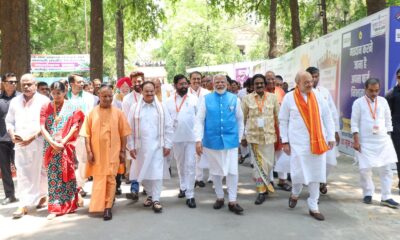Sports
“The Rise of Esports: Is It the Future of Competitive Gaming?”

In recent years, the world of competitive gaming has undergone a massive transformation, with esports emerging as a global phenomenon. From casual gamers competing in local tournaments to professional players battling it out on the world stage, esports has captured the imagination of millions. With the industry continuing to grow at an unprecedented rate, many are left wondering: Is esports the future of competitive gaming? In this blog post, we will explore the rise of esports, its impact on traditional sports, and whether it is set to dominate the future of competitive gaming.
“The Rise of Esports: Is It the Future of Competitive Gaming?”

The Evolution of Esports
Esports, or electronic sports, refers to organized, competitive video gaming. While video games have been popular for decades, the concept of esports as a structured competition began to gain traction in the late 1990s and early 2000s. Early esports tournaments were relatively small, with modest prize pools and limited audiences. However, as technology advanced and the gaming community expanded, esports began to grow into a more formalized industry.
The introduction of streaming platforms like Twitch and YouTube Gaming played a significant role in the growth of esports. These platforms allowed players to broadcast their gameplay to a global audience, making it easier for fans to follow their favorite players and teams. As a result, esports events started attracting millions of viewers worldwide, turning professional gamers into celebrities.
The Impact of Esports on Traditional Sports
The rise of esports has sparked a debate about its relationship with traditional sports. On one hand, esports shares many similarities with traditional sports. Both require skill, practice, and strategy to excel. In esports, just like in traditional sports, players often compete in teams, with coaches and analysts working behind the scenes to improve performance. Esports also has its own set of leagues, tournaments, and championships, much like traditional sports.
However, there are key differences as well. Unlike traditional sports, esports is entirely digital, and physical fitness is not a primary requirement. Instead, esports athletes rely on quick reflexes, mental agility, and in-depth knowledge of the games they play. This distinction has led some to argue that esports should not be considered a “real” sport.
Despite these differences, esports has gained recognition from traditional sports organizations. Many professional sports teams, including those from the NBA, NFL, and European football leagues, have invested in esports teams or launched their own esports divisions. This crossover suggests that esports and traditional sports may not be in competition with each other but rather complementing each other in the broader entertainment landscape. “The Rise of Esports: Is It the Future of Competitive Gaming?”
The Global Reach of Esports
One of the most remarkable aspects of esports is its global reach. Unlike traditional sports, which are often tied to specific regions or countries, esports transcends geographical boundaries. Players from all over the world can compete against each other in real-time, thanks to the power of the internet. This global nature has helped esports attract a diverse and international fanbase.
In fact, esports has become so popular that it has been included as a demonstration sport in major international sporting events, such as the Asian Games. There is even ongoing discussion about whether esports should be included as a medal event in future Olympic Games. The global popularity of esports is undeniable, and it shows no signs of slowing down.
“The Rise of Esports: Is It the Future of Competitive Gaming?”

Monetization and Growth
The esports industry has seen exponential growth in recent years, both in terms of audience size and revenue. According to Newzoo, a leading market intelligence firm, the global esports market was valued at over $1 billion in 2021, with revenues expected to continue rising. Sponsorships, advertising, media rights, and merchandise sales are key revenue streams driving this growth.
Esports has also opened up new career opportunities for gamers, content creators, and industry professionals. Professional esports players can earn substantial incomes through tournament winnings, sponsorships, and streaming revenue. Additionally, esports organizations employ coaches, analysts, marketing teams, and event organizers, creating a diverse job market within the industry.
Challenges Facing Esports
While the rise of esports is impressive, the industry does face challenges. One major concern is player burnout. Unlike traditional sports, where athletes have off-seasons, esports players often compete year-round, leading to physical and mental strain. The intense pressure to perform at a high level can take a toll on players’ well-being, and some have retired early as a result.
Another challenge is the perception of esports as a legitimate sport. While esports has gained acceptance in many circles, there are still skeptics who view it as merely a form of entertainment rather than a true athletic competition. Overcoming this stigma will be important for the long-term growth of the industry.
Is Esports the Future of Competitive Gaming?
Given its rapid growth, global reach, and increasing recognition, it seems likely that esports will play a major role in the future of competitive gaming. However, whether it will completely replace traditional sports remains to be seen. Esports offers a unique and exciting form of competition that appeals to a new generation of fans. As technology continues to evolve and more people embrace gaming as a legitimate form of entertainment, esports will likely become even more prominent on the global stage.
Ultimately, the future of competitive gaming will likely involve a blend of traditional sports and esports, with both coexisting and thriving in their respective niches. The rise of esports has shown that the world of competitive gaming is vast and diverse, with endless possibilities for growth and innovation.
“The Rise of Esports: Is It the Future of Competitive Gaming?”
Sports
The Future of Sports: How Virtual Reality is Changing the Fan Experience

As technology continues to revolutionize every facet of modern life, sports are no exception. While athletic prowess and the drama of competition remain at the heart of sports, the way fans experience these events is changing rapidly. Enter virtual reality (VR), a technology that is fundamentally altering how fans watch, interact with, and even participate in their favorite sports. In this blog, we’ll explore how VR is reshaping the fan experience, what it means for the future of sports, and how this immersive technology can make sports more accessible, interactive, and engaging.
The Future of Sports: How Virtual Reality is Changing the Fan Experience

1. The Immersive Power of Virtual Reality in Sports
Traditional sports viewing has been largely limited to stadium attendance or TV broadcasts. Fans could experience the game through two-dimensional screens or, at best, from a specific seat in a large stadium. VR, however, offers a more immersive experience by placing fans directly in the action. With a VR headset, viewers can feel like they are on the field, sideline, or even the locker room, as though they are part of the event.
Several VR platforms are already enabling users to enjoy 360-degree live broadcasts of sports events. Whether it’s sitting courtside at an NBA game or standing behind the goalposts at a soccer match, fans can now experience the game as if they were physically present, no matter where they are in the world. This technology not only provides an enriched visual experience but also delivers immersive audio that enhances the feeling of being in a packed stadium, surrounded by cheering crowds.
2. Enhancing Accessibility and Convenience
For many fans, attending live games can be costly or geographically challenging. With limited seating capacity and tickets to major events like the Super Bowl or the World Cup selling out quickly, many are left to experience the action from home. VR eliminates these barriers by providing a high-quality, in-stadium experience from the comfort of home. Fans no longer have to worry about travel expenses, long lines, or the weather—they can “attend” the game virtually with friends or other fans from across the globe.
This level of accessibility opens the door for a much broader audience to engage with sports in real-time. For people who live far from sports venues or those with disabilities that make attending events difficult, VR serves as an equalizer, enabling all fans to enjoy the live experience on equal footing.
3. Fan Engagement Beyond the Game
VR doesn’t just stop at live games; it opens up new avenues for fan interaction and engagement. With this technology, fans can explore behind-the-scenes content, such as pre-game locker room access, player warm-ups, and even post-game interviews. Some sports teams and broadcasters are already experimenting with offering VR-based fan experiences like virtual stadium tours, player meet-and-greets, and exclusive content only available through VR platforms.
Additionally, VR can enhance fantasy sports leagues. Imagine being able to virtually step into a football huddle or simulate the experience of being a manager from the sidelines. Fans could use VR to better analyze games and players from every angle, giving them a more informed perspective for fantasy decisions.
Another exciting innovation is the potential for virtual sports betting. While traditional sports betting is already widespread, VR could allow fans to virtually place bets during the game, with immersive data visualizations and real-time updates. This level of engagement could make the betting experience more interactive and dynamic, particularly in environments where betting is legal and heavily regulated.
4. Training and Coaching with Virtual Reality
Beyond fan experiences, VR is also transforming the way athletes and coaches approach training. VR simulations allow players to practice game scenarios, study opponents, and even experience live-action drills without the physical strain of real-world practice. NFL teams, for example, are already using VR to help quarterbacks improve decision-making by simulating different defensive schemes. This approach offers a low-risk, high-reward way for athletes to hone their skills, potentially reducing injuries and enhancing performance.
For fans, this means they can get a taste of what it’s like to train like their favorite athletes. VR platforms might soon offer immersive workout sessions that replicate real sports drills, allowing users to experience the same training methods as elite athletes.
5. The Social Element: Virtual Viewing Parties
Another compelling aspect of VR is its potential to bring fans together virtually. Virtual viewing parties are already becoming a reality, where fans can gather in digital environments to watch games together, chat, and share reactions in real-time. VR allows people to interact as avatars, attending games together as if they were sitting side-by-side in the stadium. This social interaction can replicate the community feel of attending a game in person, all while eliminating physical distance.
This technology also offers opportunities for sports brands to capitalize on digital merchandise, virtual concessions, and even advertising in VR environments. Imagine walking through a virtual stadium, buying digital jerseys for your avatar, or grabbing a virtual hotdog while chatting with fellow fans. joyfulroamers.com
6. Challenges and Limitations
Despite its exciting potential, VR in sports still faces several challenges. One of the primary barriers is the high cost of entry. While VR headsets have become more affordable in recent years, they are still not accessible to everyone. High-quality VR experiences also require fast, reliable internet connections, which might not be available to all fans.
Additionally, there’s the challenge of content creation. Broadcasting games in VR requires new infrastructure, and camera angles need to be optimized for an immersive experience. Not all sports have embraced VR broadcasting yet, though it’s expected to grow as demand increases.
7. What the Future Holds
As VR technology advances and becomes more affordable, the possibilities for enhancing the sports fan experience are limitless. From immersive live games to virtual reality training camps and digital viewing parties, VR is reshaping the way fans interact with their favorite sports. Major broadcasters, leagues, and teams are beginning to explore this frontier, and it’s likely that VR will become a staple of the fan experience in the coming years.
The Future of Sports: How Virtual Reality is Changing the Fan Experience

In the future, we could see hybrid stadiums where fans both physically and virtually attend games together, creating a truly global fan community. The day may not be far off when the boundary between the physical and virtual sports world blurs, allowing fans to engage with sports in entirely new and interactive ways.
Virtual reality is just the beginning of a technological revolution in sports, and as this technology matures, it will undoubtedly change the way we watch, enjoy, and experience the thrill of competition. Fans should buckle up for a future where sports are more immersive, accessible, and engaging than ever before.
The Future of Sports: How Virtual Reality is Changing the Fan Experience
Sports
How to Stay Fit During the Off-Season: Tips for Amateur Athletes

For amateur athletes, the off-season offers a crucial opportunity to recover, recharge, and prepare for the next competitive season. While the temptation to rest completely may be strong, staying fit during this period is essential to maintaining performance and preventing injury when training intensifies. In this blog post, we’ll discuss strategies to help amateur athletes stay fit during the off-season while allowing for much-needed physical and mental rest.
How to Stay Fit During the Off-Season: Tips for Amateur Athletes

1. Active Rest vs. Complete Rest
It’s important to differentiate between active rest and complete rest. While taking a few days or even a week off after a season is beneficial, prolonged inactivity can lead to deconditioning. Active rest allows you to stay moving without the intensity of in-season training. Activities like light jogging, swimming, yoga, or hiking can keep your body engaged while giving it time to recover from the more intense stress of your primary sport.
Key Tip: Aim for 30-45 minutes of light physical activity 3-4 times a week during the early phase of the off-season.
2. Cross-Training
The off-season is the perfect time to incorporate cross-training into your routine. Cross-training helps prevent burnout, engages different muscle groups, and can improve overall fitness. If you’re a runner, consider cycling or swimming; if you’re a football player, try tennis or basketball. These alternative activities will help maintain cardiovascular fitness and muscle strength while reducing the risk of overuse injuries. joyfulroamers.com
Key Tip: Choose sports or activities that are fun and challenging but different from your primary sport. This keeps things interesting while improving overall athleticism.
3. Strength and Conditioning
One of the main focuses during the off-season should be improving strength and addressing muscle imbalances. This is an ideal time to build up areas of your body that may not get as much attention during the season. Functional strength training, including squats, lunges, deadlifts, and core exercises, helps improve performance and reduce injury risk when the season begins again.
Incorporate weight training 2-3 times a week, focusing on both major muscle groups and sport-specific movements. Don’t forget to integrate mobility work, which improves flexibility and joint health, preventing future injuries.
Key Tip: Focus on compound exercises and movements that mimic your sport’s demands. This builds a solid foundation for more intense training later on.
4. Maintain Cardiovascular Fitness
While the intensity of your cardio workouts may decrease in the off-season, maintaining a baseline level of cardiovascular fitness is essential. This doesn’t mean you need to keep up with your in-season intensity, but staying consistent with moderate aerobic activities will help you avoid a major drop in fitness levels. Activities like cycling, swimming, or brisk walking are excellent for maintaining heart health without overly taxing your body.
Key Tip: Incorporate 30-60 minutes of moderate cardio 3-4 times per week to keep your cardiovascular system in shape.
5. Focus on Flexibility and Mobility
Athletes often neglect flexibility and mobility during the season due to the high volume of sport-specific training. However, the off-season is the perfect time to enhance these areas, which can improve your range of motion, prevent injury, and optimize overall performance. Yoga, dynamic stretching, and foam rolling are excellent tools to incorporate into your routine.
Key Tip: Dedicate at least 15-20 minutes daily to mobility work or stretching, focusing on tight areas or joints heavily used during your sport.
6. Mental Recovery and Visualization
The off-season isn’t just about physical recovery—it’s also a great time to focus on mental rejuvenation. Many amateur athletes experience burnout from constant training and competition, so taking time to relax mentally is essential. That said, maintaining a strong mental game can still be part of your off-season strategy.
Visualization and mindfulness practices help athletes stay focused without the intensity of competition. Spend time imagining successful plays, techniques, or races in your mind. This keeps you mentally sharp and helps you prepare for the upcoming season.
Key Tip: Practice visualization techniques a few times a week to build mental resilience and maintain a competitive edge.
7. Prioritize Rest and Sleep
The off-season is the perfect opportunity to prioritize recovery, with sleep being the most critical aspect of that recovery. Getting 7-9 hours of quality sleep each night helps with muscle repair, mental clarity, and overall well-being. While the off-season may involve lower intensity training, your body is still working to heal and build for the upcoming season.
In addition to sleep, don’t be afraid to take full days off. Listening to your body and taking rest when needed is crucial for long-term performance.
Key Tip: Establish a consistent sleep schedule and create a relaxing bedtime routine to ensure quality rest.
8. Nutrition and Hydration
Maintaining proper nutrition during the off-season is just as important as it is during the competitive season. While you may reduce your caloric intake slightly due to decreased activity levels, it’s important to continue fueling your body with nutrient-dense foods. Focus on a balanced diet rich in lean proteins, healthy fats, and complex carbohydrates to support recovery and muscle repair.
Additionally, hydration is often overlooked in the off-season. Keep up with your water intake to support recovery, digestion, and overall health.
Key Tip: Incorporate more fruits, vegetables, and whole grains into your diet to support immune function and maintain energy levels during the off-season.
9. Goal Setting and Evaluation
The off-season is an excellent time for reflection and goal setting. Analyze your performance during the last season and identify areas for improvement. Setting specific, measurable goals will help you stay motivated and focused. Whether it’s improving speed, strength, or technique, having clear objectives will make your off-season training more effective.
Key Tip: Write down your goals and break them into actionable steps. Track your progress and adjust your training as necessary.
10. Gradual Return to Sport-Specific Training
As the off-season comes to a close, start gradually transitioning back to sport-specific training. Begin reintroducing drills, skills, and movements that are central to your sport. Avoid jumping back into intense training too quickly, as this can increase the risk of injury.
Key Tip: Slowly increase the intensity and specificity of your training over several weeks, allowing your body to adapt.
How to Stay Fit During the Off-Season: Tips for Amateur Athletes

Conclusion
Staying fit during the off-season doesn’t have to be grueling or time-consuming. By focusing on active rest, cross-training, strength conditioning, and mental recovery, amateur athletes can maintain their fitness levels and enter the next season stronger than before. The off-season is also the perfect time to evaluate, set goals, and address any weaknesses, giving you a competitive edge when it’s time to compete again.
How to Stay Fit During the Off-Season: Tips for Amateur Athletes
Sports
The Most Iconic Sports Rivalries of All Time

Sports have always been about more than just athletic prowess—they tap into deep emotions, ignite passions, and, at their most compelling, spark rivalries that transcend the game itself. Rivalries elevate sports to the next level, creating a sense of drama and anticipation unmatched by any other aspect of competition. These rivalries can define entire generations of fans, athletes, and cultures.
The Most Iconic Sports Rivalries of All Time

1. Real Madrid vs. FC Barcelona (El Clásico)
Arguably the most famous soccer rivalry in the world, El Clásico between Real Madrid and FC Barcelona transcends the sport itself. Beyond the field, this rivalry represents a clash of ideologies—Madrid as a symbol of centralism and monarchy, while Barcelona embodies Catalan pride and independence. The rivalry’s intensity is fueled by political and regional tensions that add an extra layer to an already fierce competition. joyfulroamers.com
Both clubs have a history of excellence, boasting numerous domestic and international titles. Players like Lionel Messi, Cristiano Ronaldo, Ronaldinho, and Alfredo Di Stéfano have etched their names in El Clásico history, delivering unforgettable performances. Every encounter between these two Spanish giants is an event, captivating millions of fans worldwide.
2. Boston Red Sox vs. New York Yankees
In Major League Baseball, few rivalries have the storied history and animosity of the Boston Red Sox and the New York Yankees. The roots of this rivalry go back to 1919 when the Red Sox sold Babe Ruth to the Yankees, initiating the so-called “Curse of the Bambino,” a superstition that the Red Sox would not win another World Series after this trade.
For decades, this rivalry was defined by Yankees dominance, with the Red Sox seemingly cursed, as they endured an 86-year title drought. However, the rivalry reached a fever pitch in 2004, when Boston came back from a 3-0 deficit to beat the Yankees in the American League Championship Series, en route to breaking their curse and winning the World Series. This rivalry is about more than baseball; it’s about pride, identity, and a shared disdain between two passionate fan bases.
3. Roger Federer vs. Rafael Nadal
Tennis has had its fair share of epic matchups, but the rivalry between Roger Federer and Rafael Nadal stands out as one of the greatest in sports history. Their contrasting styles—Federer’s elegance and precision versus Nadal’s intensity and grit—have produced some of the most thrilling matches ever played.
Federer and Nadal have faced each other 40 times in their careers, with Nadal holding the edge in their head-to-head record. The 2008 Wimbledon final is often regarded as one of the greatest tennis matches of all time, with Nadal emerging victorious after nearly five hours of back-and-forth action. While their rivalry was heated on the court, off the court, the mutual respect between the two has been just as iconic, setting an example of sportsmanship.
4. Celtics vs. Lakers
In the NBA, the rivalry between the Boston Celtics and the Los Angeles Lakers is legendary. These two teams have met in the NBA Finals 12 times, more than any other matchup in the league’s history. The rivalry began in the 1960s when Bill Russell’s Celtics dominated the league, frequently besting the Lakers, who were led by Jerry West and Elgin Baylor.
The rivalry was rekindled in the 1980s, during the Magic Johnson vs. Larry Bird era, when both teams traded NBA titles. This period was the golden age of the NBA, with the Celtics and Lakers dominating the league, and their rivalry helped elevate basketball’s global popularity. The 2008 and 2010 Finals between the two teams further solidified the rivalry as one of the greatest in sports.
5. Muhammad Ali vs. Joe Frazier
The rivalry between Muhammad Ali and Joe Frazier is one of the most storied in boxing history. Their trilogy of fights, particularly the “Fight of the Century” in 1971 and the brutal “Thrilla in Manila” in 1975, remains iconic. Ali’s brash personality and outspoken confidence clashed with Frazier’s stoic determination, making each bout a battle not just of physical strength but of character.
Their first fight in 1971 was the first time two undefeated heavyweight champions faced off, with Frazier handing Ali his first professional defeat. The final fight, “Thrilla in Manila,” is widely regarded as one of the most brutal and intense boxing matches in history, with Ali winning by technical knockout after 14 grueling rounds. The Ali-Frazier rivalry embodied the drama, tension, and passion that make sports rivalries unforgettable.
6. India vs. Pakistan (Cricket)
In cricket, no rivalry carries as much political, cultural, and emotional weight as India vs. Pakistan. Since the partition of British India in 1947, relations between these two countries have been tense, and their cricket matches have become a stage for national pride and rivalry. Every India-Pakistan game, especially during major tournaments like the Cricket World Cup or the Asia Cup, draws massive audiences.
The rivalry isn’t just about cricket; it’s about history, politics, and national identity. Both teams have produced some of the finest cricketers in the world, from Pakistan’s Wasim Akram and Javed Miandad to India’s Sachin Tendulkar and Virat Kohli. Matches between these two nations are marked by nail-biting finishes, fervent fanbases, and high stakes.
7. Michigan vs. Ohio State (College Football)
In American college football, few rivalries are as intense as Michigan vs. Ohio State. Known simply as “The Game,” this matchup has been a defining feature of Big Ten football for over a century. The two Midwestern powerhouses have consistently competed for conference championships and national titles, making their annual November clash one of the most anticipated events in college football.
The rivalry reached its peak in the 1970s, when Michigan’s Bo Schembechler and Ohio State’s Woody Hayes squared off in what is known as the “Ten Year War.” Even today, the rivalry remains one of the most heated in sports, with passionate fanbases on both sides.
The Most Iconic Sports Rivalries of All Time

Conclusion
Sports rivalries are about more than just winning or losing; they are about pride, history, and identity. These iconic rivalries—whether in soccer, baseball, tennis, basketball, boxing, cricket, or college football—have left an indelible mark on the history of sports. They have provided fans with unforgettable moments, heartbreaking losses, and exhilarating victories. More importantly, they remind us why we love sports: the drama, the competition, and the emotion that comes with every rivalry game or match.
-

 Politics6 months ago
Politics6 months agoNarendra Modi’s Heartfelt Connection with Kashi and Maa Ganga
-

 Travel6 months ago
Travel6 months ago6 Essential Travel Tips and Hacks for the Savvy Traveler
-

 Web Stories6 months ago
Web Stories6 months agoTips to Protect Your Smartphone from Getting Hacked
-

 Technology6 months ago
Technology6 months ago6 Essential Tips to Protect Your Smartphone from Getting Hacked
-

 Trending5 months ago
Trending5 months agoGoogle Gemini AI App Debuts in India: How It Operates on Android Devices – Comprehensive Guide
-

 Travel5 months ago
Travel5 months ago6 Budget Travel Without Visa from India: Top Destinations
-

 Travel5 months ago
Travel5 months ago6 Hill Stations in West Bengal That Are Perfect in July
-

 Fitness5 months ago
Fitness5 months ago5-Minute Workouts: Effective Home Exercises



